
Les fanatiques de l’Apocalypse, de Norman Cohn
Ex: http://oratio-obscura.blogspot.com
Au nombre des méfaits commis par les figures dirigeantes du Parti socialiste, il convient d’ajouter la propagation de l’ignorance –ceci, non pas seulement en matière de réformes éducatives, mais également dans le dénigrement public de la science. Je pense en particulier à l’hostilité de nos élites vis-à-vis des effets de dévoilement produits par la sociologie qui, non contente de souligner les conditions matérielles et historiques permettant l’apparente majesté du pouvoir, dissout également l’apparente opacité des faits du monde social. Dans ces conditions, tous les pouvoirs qui aspirent à la peur des masses, afin se poser comme remparts (incritiquables) face aux ténèbres, n’ont qu’un recours : tuer le messager. Ainsi, de Lionel Jospin à Manuel Valls, les soi-disant progressistes qui passent leur temps à parler du social (« lien social », « dialogue social », « justice sociale », etc.), n’ont eu de cesse de rejeter toutes tentatives d’explications des causes sociales de phénomènes tels que la délinquance ou le terrorisme islamiste. Pour les politiciens paresseux et les intellectuels faussaires, il est en effet plus confortable de faire des individus des sujets à la Sartre, nageant dans la pure liberté. Et les petits constructivistes de gauche qui veulent, sous couvert de la laïcité, créer une société religieusement neutre, sont bien contents de faire de la religion la source de la violence, comme si la religion n’était pas elle-même un produit des conditions d’existence des hommes, comme si les diverses interprétations et pratiques religieuses n’étaient pas produites dans des circonstances historiques toujours particulières, pour répondre à des objectifs donnés.
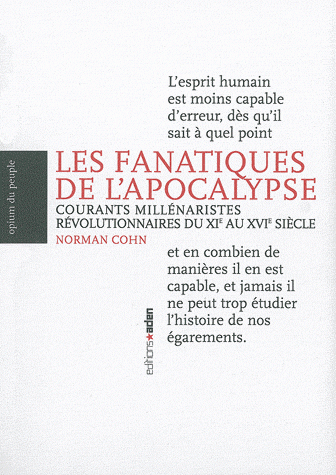 C’est pour rompre avec cet obscurantisme officiel que j’invite le lecteur à parcourir quelques extraits du premier chapitre de l’excellente étude de l’historien britannique Norman Cohn, Les Fanatiques de l’Apocalypse (1957). Au travers du cas particulier du millénarisme antique et médiéval, on peut aisément s’apercevoir que la religion n’est pas une force transhistorique flottant au-dessus de la vie sociale, mais au contraire un produit de l’activité des hommes, fluctuant dans les remous de l’Histoire.
C’est pour rompre avec cet obscurantisme officiel que j’invite le lecteur à parcourir quelques extraits du premier chapitre de l’excellente étude de l’historien britannique Norman Cohn, Les Fanatiques de l’Apocalypse (1957). Au travers du cas particulier du millénarisme antique et médiéval, on peut aisément s’apercevoir que la religion n’est pas une force transhistorique flottant au-dessus de la vie sociale, mais au contraire un produit de l’activité des hommes, fluctuant dans les remous de l’Histoire.
« De la fin du XIème siècle jusqu’à la première moitié du XVIème siècle, l’Europe vit à plusieurs reprises les pauvres, désireux d’améliorer leurs conditions de vie, mêler ce désir au rêve chimérique d’un nouveau Paradis terrestre, d’un univers libéré de la souffrance et du mal, d’un Royaume des Saints.
L’histoire de ses siècles est, bien entendu, parsemée de luttes innombrables entre les privilégiés et leurs inférieurs : soulèvements des villes contre leurs seigneurs, des artisans contre les négociants capitalistes, des paysans contre les nobles. En règle générale, ces soulèvements ne se proposaient que des objectifs strictement limités –obtention de certains privilèges, abolition de certaines injustices- ou alors il s’agissait d’explosions de fureur destructrice suscitées par la misère pure et simple, et dont la Jacquerie constitue un exemple célèbre. Certains soulèvements revêtirent toutefois une portée différente. Le Moyen Age avait hérité de l’Antiquité –des Juifs et des chrétiens primitifs- une tradition prophétique qui connut un fantastique regain de vitalité. Pour parler le langage qui s’impose ici, celui des théologiens, il se constitua une eschatologie (un corps de doctrine concernant le sort ultime de l’univers) d’ordre chiliastique (dans le sens le plus large du terme, c’est-à-dire qui prédisait l’avènement d’un Millénium non pas limité à mille ans, mais pratiquement illimité, au cours duquel le monde serait habité par une humanité à la fois parfaitement bonne et parfaitement heureuse). Cette eschatologie, riche d’un réconfort que la doctrine officielle de l’Église médiévale s’interdisait de prodiguer, finit par exercer sur le peuple une fascination puissante et durable. Chaque génération s’adonnait, ne fût-ce que temporairement, à l’espoir fébrile de quelque événement subit et miraculeux qui entraînerait la transformation intégrale du monde, ou de quelque prodigieuse lutte finale qui, opposant les cohortes du Christ à celles de l’Antéchrist, constituerait à la fois l’apogée et la justification de l’histoire. Il serait certes simpliste d’assimiler le monde de l’exaltation chiliastique à celui de l’agitation sociale. Mais il n’est douteux qu’à maintes reprises les masses affligées et mécontentes furent séduites par quelque « prophète » millénariste. Des mouvements se constituaient alors qui, en dépit de leurs proportions réduites et de leur caractère éphémère, nous frappent rétrospectivement par l’analogie qu’ils présentent avec les grands mouvements totalitaires contemporains.
Ce rapprochement ne manquera pas de susciter certaines réserves. N’est-ce pas projeter sur une civilisation disparue des préoccupations qui n’appartiennent qu’à notre temps ? Je ne le pense pas. Je n’irai certes pas jusqu’à nier que dans cet imprévisible kaléidoscope que nous appelons l’histoire, chaque constellation éphémère possède son irréductible spécificité. Mais l’histoire des conduites sociales révèle certains schèmes récurrents, dans leurs grandes lignes du moins, et dont les analogies semblent très frappantes. Cela n’apparaît nulle part plus clairement que dans les mouvements de masse éminemment émotionnels qui constituent le sujet de notre étude. On ne compte pas les cas où les gens se groupèrent au sein de mouvements millénaristes d’une sorte ou d’une autre, et ceci à différentes époques de l’histoire, dans bien des régions et au sein de sociétés fort diverses du point de vue de leurs techniques, de leurs institutions, de leurs valeurs et de leurs croyances. Leur ton allait de l’agressivité la plus outrancière au pacifisme le plus doux. Leur but, de la spiritualité la plus éthérée au matérialisme le plus vil. On ne saurait dénombrer ni les différentes représentations du Millénium ni les voies pour y parvenir. Mais les analogies apparaissent autant que les différences, et plus l’on compare les explosions du chiliasme social militant de la deuxième moitié du Moyen Age aux mouvements totalitaires modernes, plus on est frappé par leurs ressemblances. Une tyrannie mondiale va succomber sous peu sous les coups du peuple élu guidé par une élite infaillible et inspirée. Ce conflit imminent revêtira une importance incomparable et unique, car il permettra de purifier à jamais l’univers du mal qu’il renferme et amènera l’histoire à sa consommation prévue de toute éternité. Ces chimères n’ont rien perdu de leur puissance de fascination. Même si les vieux symboles et les slogans d’autrefois ont été remplacés, la structure des rêves fondamentaux n’a pratiquement pas changé. […]
La genèse de cette eschatologie n’a fait jusqu’à présent l’objet d’aucune étude détaillée. Les sectes les plus strictement religieuses, qui naquirent et disparurent durant cette même période, ont au contraire été amplement analysées. L’histoire des cathares, dont la religion gnostique s’épanouit sur de vastes secteurs de l’Europe méridionale, et celle des vaudois que certains considèrent comme des précurseurs de la Réforme, ont suscité une littérature plus qu’abondante. On a beaucoup parlé également de ces chiliastes particulièrement ascétiques, les franciscains dits spirituels. Mais on s’est rarement interrogé sur la façon dont, pendant près de quatre siècles et demi, les doctrines apocalyptiques cristallisèrent les aspirations, les rancœurs et les angoisses sociales qu’elles dotèrent en retour d’un dynamisme nouveau. […] Ces différents mouvements ne peuvent être considérés (ils ne le furent pas de leur temps) comme constituant une secte hérétique unique dotée de caractéristiques propres. Les documents attestent plutôt l’existence d’une longue tradition salutiste populaire fondée sur des croyances pour la plupart tolérées par l’Église à une époque ou à une autre, mais qui, par l’interprétation qui en était donnée et la façon dont elles s’exprimaient, mettaient en péril l’ordre social existant. Le présent ouvrage se propose, dans la mesure du possible, de suivre l’évolution de cette tradition dans certaines parties de l’Europe au Moyen Age. » (p.7-11)
Norman Cohn (photo)
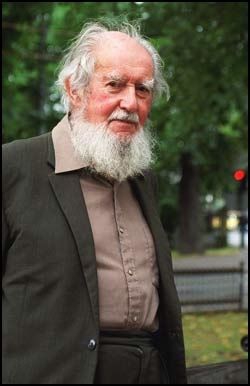 « Déjà les livres prophétiques de l’Ancien Testament, dont certains remontent au VIIIème siècle, décrivaient une immense catastrophe cosmique, dont émergeraient une Palestine qui ne serait rien de moins qu’un nouvel Éden, un paradis reconquis. Ayant négligé son Dieu, le peuple élu devait connaître la famine, la peste, la guerre et la captivité, avant d’être soumis à un jugement qui, par sa sévérité, effectuerait une rupture totale avec un passé coupable. D’abord viendra le Jour de Jéhovah, le jour de colère. Le soleil, la lune et la étoiles seront enveloppés de ténèbres, les cieux se replieront comme un parchemin qu’on roule, et la terre tremblera. Alors sonnera l’heure du Jugement qui verra les mécréants (c’est-à-dire les élus qui n’auront pas eu foi dans leur Seigneur et les païens, ennemis d’Israël) jugés et éliminés, sinon totalement anéantis. Mais ce ne sera pas tout : certains Juifs, « les restes salvifiques », survivront à ces châtiments et deviendront l’instrument des desseins de Dieu. Le peuple élu ainsi amendé et régénéré, Jéhovah renoncera à sa vengeance et se muera en Libérateur. Les Justes […] se regrouperont en Palestine et Jéhovah viendra s’établir parmi eux. Il sera leur Seigneur et leur Juge. Il régnera sur Jérusalem reconstruite, sur Sion devenue capitale spirituelle du monde, vers laquelle convergeront tous les peuples. […]
« Déjà les livres prophétiques de l’Ancien Testament, dont certains remontent au VIIIème siècle, décrivaient une immense catastrophe cosmique, dont émergeraient une Palestine qui ne serait rien de moins qu’un nouvel Éden, un paradis reconquis. Ayant négligé son Dieu, le peuple élu devait connaître la famine, la peste, la guerre et la captivité, avant d’être soumis à un jugement qui, par sa sévérité, effectuerait une rupture totale avec un passé coupable. D’abord viendra le Jour de Jéhovah, le jour de colère. Le soleil, la lune et la étoiles seront enveloppés de ténèbres, les cieux se replieront comme un parchemin qu’on roule, et la terre tremblera. Alors sonnera l’heure du Jugement qui verra les mécréants (c’est-à-dire les élus qui n’auront pas eu foi dans leur Seigneur et les païens, ennemis d’Israël) jugés et éliminés, sinon totalement anéantis. Mais ce ne sera pas tout : certains Juifs, « les restes salvifiques », survivront à ces châtiments et deviendront l’instrument des desseins de Dieu. Le peuple élu ainsi amendé et régénéré, Jéhovah renoncera à sa vengeance et se muera en Libérateur. Les Justes […] se regrouperont en Palestine et Jéhovah viendra s’établir parmi eux. Il sera leur Seigneur et leur Juge. Il régnera sur Jérusalem reconstruite, sur Sion devenue capitale spirituelle du monde, vers laquelle convergeront tous les peuples. […]
Les textes apocalyptiques, destinés aux couches inférieures de la population juive et qui représentent une forme de propagande nationaliste, frappent par leur grossièreté et leur démesure. Ceci, dès le premier texte apocalyptique, la vision ou songe du chapitre vu du Livre de Daniel, rédigé vers 165 avant Jésus-Christ, à une période particulièrement difficile de l’histoire juive. Après l’exil de Babylone, les Juifs de Palestine avaient joui, plus de trois siècles durant, d’une sécurité et d’une paix relatives sous l’égide des Perses, puis de la dynastie des Ptolémées. Mais la situation changea lorsque, au IIème siècle avant Jésus-Christ, la Palestine tomba aux mains de la dynastie gréco-romaine des Séleucides. Les Juifs eux-mêmes étaient en proie à d’amères divisions : si l’aristocratie mondaine adoptait d’enthousiasme les mœurs grecques, le peuple, lui, persévéraient avec une résolution accrue dans la foi de ses pères. Lorsqu’Antiochus IV Épiphane, de la dynastie des Séleucides, intervint en faveur du parti grécophile, allant jusqu’à interdire l’observance des rites judaïques, il se heurta à la riposte populaire : ce fut la révolte des Macchabées. Dans le Songe de Daniel, composé au moment où cette révolte faisait rage, quatre bêtes symbolisent quatre puissances mondiales successives : les Babyloniens, la dynastie mythique des Mèdes, les Perses et les Grecs ; la quatrième bête : « sera différente de tous les royaumes et … dévorera toute la terre, la frappera et la brisera. » (Daniel, VII, 23). A la chute de l’empire, Israël, incarné par le « Fils de l’Homme », « vint dans les nuées des cieux… et il vint jusqu’à l’Ancien des jours… et il lui fut donné la seigneurie et l’honneur et le règne… et tous les peuples et les nations le servirent. Sa domination est une domination éternelle qui ne passera point… et les Saints du Souverain receveront le Royaume et y règneront jusqu’au siècle des siècles » (Daniel, VII, 13-14, 27). Aucun des prophètes n’était allé aussi loin. Pour la première fois, le royaume glorieux de l’avenir embrasse, dans l’imagination d’Israël, non seulement la Palestine mais l’ensemble de l’univers.
 On retrouve là l’essentiel de ce qui allait devenir le thème central de l’eschatologie révolutionnaire. L’univers est dominé par une puissance maléfique et tyrannique dont la capacité de destruction est infinie, puissance d’ailleurs conçue comme surhumaine et démoniaque. Sous cette dictature, les outrages se multiplient, les souffrances des victimes deviennent de plus en plus intolérables, jusqu’à ce que sonne l’heure où les saints de Dieu seront à même de se dresser pour l’abattre. Alors les saints eux-mêmes, le peuple élu, ce peuple saint, qui n’a cessé de gémir sous le joug de l’oppresseur, héritera à son tour de l’hégémonie universelle. Ce sera l’apogée de l’histoire. Le Royaume des Saints surpassera en gloire tous les règnes antérieurs : bien plus, il n’aura pas de successeurs. C’est par cette chimère que l’apocalyptique juive et ses nombreux dérivés, devaient exercer une incomparable fascination sur tous les insurgés, sur tous les mécontents à venir. » (p.16-19)
On retrouve là l’essentiel de ce qui allait devenir le thème central de l’eschatologie révolutionnaire. L’univers est dominé par une puissance maléfique et tyrannique dont la capacité de destruction est infinie, puissance d’ailleurs conçue comme surhumaine et démoniaque. Sous cette dictature, les outrages se multiplient, les souffrances des victimes deviennent de plus en plus intolérables, jusqu’à ce que sonne l’heure où les saints de Dieu seront à même de se dresser pour l’abattre. Alors les saints eux-mêmes, le peuple élu, ce peuple saint, qui n’a cessé de gémir sous le joug de l’oppresseur, héritera à son tour de l’hégémonie universelle. Ce sera l’apogée de l’histoire. Le Royaume des Saints surpassera en gloire tous les règnes antérieurs : bien plus, il n’aura pas de successeurs. C’est par cette chimère que l’apocalyptique juive et ses nombreux dérivés, devaient exercer une incomparable fascination sur tous les insurgés, sur tous les mécontents à venir. » (p.16-19)
« Baruch prédit l’avènement certain d’une ère de souffrance et d’injustice terribles, l’ère du dernier empire, celui des Romains. C’est alors, au moment même où le mal aura atteint son apogée, que paraîtra le Messie. Formidable guerrier, il sèmera la déroute parmi les cohortes ennemies qu’il réduira à néant. Il fera prisonnier le chef des Romains et le traînera enchaîné sur la montagne de Sion, où il le mettra à mort. Le royaume qu’il instaurera durera jusqu’à la fin du monde. Toutes les nations qui ont régné sur Israël seront passées au fil de l’épée ; certains peuples survivants seront placés sous la coupe du peuple élu. Une ère de béatitude s’ouvrira. » (p.20)
«Simon bar-Cochba qui mena la dernière guerre d’indépendance juive, en 131, fut encore acclamé comme messie. Mais la répression sanglante de ce soulèvement et la suppression d’Israël en tant que nation mirent un terme à la foi apocalyptique et à l’ardeur militante des Juifs. Si au cours des siècles suivant, un certain nombre de soi-disant messies surgirent au sein des communautés essaimées dans divers pays, ils ne prétendaient plus créer un empire mondial eschatologique, mais se proposaient seulement de reconstituer le foyer national. […] L’élaboration des prophéties messianiques, dans la tradition du Songe de Daniel, était passée des mains des Juifs à celles des chrétiens, et ce furent eux qui continuèrent à s’en inspirer. » (p.21)
« Comme les Juifs, les chrétiens réagirent contre l’oppression dont ils étaient l’objet, en proclamant avec une vigueur accrue, à la face du monde et d’eux-mêmes, leur foi dans l’imminence de l’ère messianique qui verrait les tors redressés et les ennemis de Dieu jetés bas. » (p.23)
« En 156 après Jésus-Christ, un certain Montanus de Phrygie se proclama l’incarnation du Saint-Esprit, de cet Esprit de Vérité qui selon le quatrième Évangile devait dévoiler les choses à venir (Jean XV, 26, XVI, 13). Autour de lui se regroupèrent bientôt un certain nombre d’extatiques qui s’adonnaient généreusement à des expériences visionnaires auxquelles ils attribuaient aveuglément une origine divine, et qui constituaient pour eux le Troisième Testament. Leurs illuminations avaient pour thème l’avènement prochain du royaume : la nouvelle Jérusalem allait descendre des cieux sur la terre phrygienne où elle deviendrait le tabernacle des saints. Ils appelaient en conséquence tous les chrétiens à se rendre en Phrygie pour y attendre la parousie –ou Second Avènement-, dans le jeûne, la prière et les larmes du repentir. […]
Rien n’était aussi propice à l’expansion du montanisme que la persécution : aussi, lorsqu’à partir de 177 les chrétiens furent l’objet de nouvelles persécutions dans nombre de provinces romaines, le montanisme perdit soudain son caractère local pour se propager non seulement en Asie Mineure mais aussi en Afrique, à Rome et même en Gaule. […] Tertullien, le plus célèbre théologien occidental de ce temps […] se joignit au mouvement montaniste. » (p.25-26)
« Irénée, originaire lui aussi d’Asie mineure, porta ces prophéties sur la terre de Gaule vers la fin du premier siècle. Évêque de Lyon et théologien émérite, il fit probablement plus que tout autre pour enraciner les croyances chiliastiques en Occident. » (p.28)
« C’est dans l’œuvre de Commodianus, très médiocre poète latin du Vème siècle, que ces chimères traditionnelles, où la vengeance est inséparable du triomphe, se résument pour la première fois en un appel aux armes, première esquisse de l’esprit de croisade chiliastique qui devait déferler sur l’Europe médiévale, puis à notre époque. » (p.29-30)
 « Au IIIème siècle eut lieu la première tentative visant à discréditer les doctrines chiliastiques : Origène, le plus influent peut-être des théologiens de l’Église, assure en effet que l’avènement du Royaume se situera non pas dans l’espace et dans le temps, mais uniquement dans l’âme des fidèles. A une eschatologie millénariste collective, il substitue donc une eschatologie de l’âme individuelle. […] De fait, ce déplacement d’intérêt répond admirablement aux besoins d’une Église désormais organisée, jouissant d’une paix pratiquement ininterrompue et d’un statut universellement admis. Lorsqu’au IVème siècle, le christianisme établit son hégémonie sur le monde méditerranéen et devint la religion officielle de l’Empire, l’Église prit de plus en plus nettement ses distances à l’égard des théories chiliastiques. L’Église catholique, institutionnalisée, puissante et prospère, suivait une routine solidement établie, et ses responsables n’éprouvaient aucune envie de voir les chrétiens se cramponner à des rêves démodés et trompeurs d’un nouveau paradis terrestre. Au début du Vème siècle, saint Augustin élabora la doctrine correspondant à ces circonstances nouvelles. La Cité de Dieu explique que l’Apocalypse doit être interprétée comme une allégorie spirituelle. Quant au millénium, la naissance du christianisme en avait marqué l’avènement et l’Église en était la réalisation sans faille. Cette théorie prit rapidement valeur de dogme, au point que le Concile d’Éphèse (431) condamna la croyance au Millénium comme une superstition aberrante. » (p.32)
« Au IIIème siècle eut lieu la première tentative visant à discréditer les doctrines chiliastiques : Origène, le plus influent peut-être des théologiens de l’Église, assure en effet que l’avènement du Royaume se situera non pas dans l’espace et dans le temps, mais uniquement dans l’âme des fidèles. A une eschatologie millénariste collective, il substitue donc une eschatologie de l’âme individuelle. […] De fait, ce déplacement d’intérêt répond admirablement aux besoins d’une Église désormais organisée, jouissant d’une paix pratiquement ininterrompue et d’un statut universellement admis. Lorsqu’au IVème siècle, le christianisme établit son hégémonie sur le monde méditerranéen et devint la religion officielle de l’Empire, l’Église prit de plus en plus nettement ses distances à l’égard des théories chiliastiques. L’Église catholique, institutionnalisée, puissante et prospère, suivait une routine solidement établie, et ses responsables n’éprouvaient aucune envie de voir les chrétiens se cramponner à des rêves démodés et trompeurs d’un nouveau paradis terrestre. Au début du Vème siècle, saint Augustin élabora la doctrine correspondant à ces circonstances nouvelles. La Cité de Dieu explique que l’Apocalypse doit être interprétée comme une allégorie spirituelle. Quant au millénium, la naissance du christianisme en avait marqué l’avènement et l’Église en était la réalisation sans faille. Cette théorie prit rapidement valeur de dogme, au point que le Concile d’Éphèse (431) condamna la croyance au Millénium comme une superstition aberrante. » (p.32)
« Si les mouvements révolutionnaires d’inspiration plus ou moins eschatologique furent relativement nombreux en Europe au Moyen Age, ils furent pourtant loin d’être universels ou continus. Rien ne prouve qu’il s’en soit produit avant les dernières années du XIème siècle, et même par la suite (du moins pour l’Europe du Nord), seule la vallée du Rhin possède une tradition chiliastique révolutionnaire presque interrompue jusqu’au XVIème siècle. Une telle tradition marque, de la fin du XIème jusqu’au milieu du XVIème siècle, l’histoire de certaines régions de l’actuelle Belgique ou du Nord de la France, et de certaines parties de l’Allemagne centrale et méridionale, du milieu du XIIIème siècle jusqu’à la Réforme ; on la retrouve ensuite en Hollande et en Westphalie. […] Les régions où les prophéties millénaristes séculaires revêtent soudain une signification nouvelle révolutionnaire, et connaissent un regain de vigueur, sont celles où l’essor économique est particulièrement rapide et se double d’une forte expansion démographique. » (p.41-42)
« Si le dénuement, la misère et l’oppression […] pouvaient suffire à faire naître un millénarisme révolutionnaire, celui-ci aurait connu un essor considérable dans les rangs de la paysannerie médiévale. Ce ne fut que très rarement le cas. Des serfs souvent tentés de prendre la fuite, des efforts réitérés de communautés paysannes pour arracher certaines concessions, des révoltes sporadiques éphémères, tout cela relevait presque du quotidien dans plus d’un domaine seigneurial de l’époque. Toutefois, il est très rare que des paysans, nantis d’une terre, aient consentis à se lancer dans la quête du Millénium. S’ils le faisaient, c’est qu’ils se trouvaient entraînés dans un mouvement plus vaste qui avait pris naissance dans des couches sociales très différentes, ou que leur propre mode de vie traditionnel se dégradait, ou encore, et c’était le cas le plus fréquent, pour ces deux raisons ensemble. » (p.44-45)
« Le réseau des liens sociaux dans lequel le paysan se trouvait jeté dès sa naissance était si puissant et si solidement ancré qu’il rendait impossible tout désarroi radical. […] La notion même d’un bouleversement social était impensable. Dans une économie uniformément primitive où personne n’était extrêmement riche, rien ne venait susciter des besoins nouveaux ; rien, en tout cas, ne pouvait inciter à des rêves de puissance ou de faste. » (p.46-47)
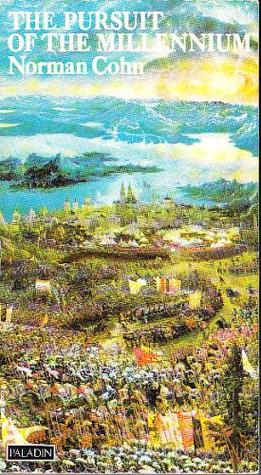 « Cet état de choses se mit à évoluer à partir du XIème siècle, plusieurs régions d’Europe bénéficiant d’une paix assez durable pour permettre l’accroissement de la population et l’essor du commerce. […] Dès le XIème siècle, le Nord-Est de la France, les Pays-Bas et la vallée du Rhin avaient atteint une densité de population telle que le système agricole traditionnel se révélait incapable d’en assurer la subsistance. Nombre de paysans se mirent à défricher des forêts, des marécages et des franges côtières, ou prirent la route de l’Est pour participer à la grande colonisation allemande des terres slaves : ces pionniers eurent généralement la vie plus facile. Restaient de nombreux paysans sans terre, ou que leur lopin ne suffisait pas à nourrir : il leur fallait donc se débrouiller tant bien que mal. Une partie de cette population excédentaire alla grossir les rangs du prolétariat rural. D’autres affluèrent dans les nouveaux centres urbains et industriels pour donner naissance à un prolétariat urbain. » (p.48)
« Cet état de choses se mit à évoluer à partir du XIème siècle, plusieurs régions d’Europe bénéficiant d’une paix assez durable pour permettre l’accroissement de la population et l’essor du commerce. […] Dès le XIème siècle, le Nord-Est de la France, les Pays-Bas et la vallée du Rhin avaient atteint une densité de population telle que le système agricole traditionnel se révélait incapable d’en assurer la subsistance. Nombre de paysans se mirent à défricher des forêts, des marécages et des franges côtières, ou prirent la route de l’Est pour participer à la grande colonisation allemande des terres slaves : ces pionniers eurent généralement la vie plus facile. Restaient de nombreux paysans sans terre, ou que leur lopin ne suffisait pas à nourrir : il leur fallait donc se débrouiller tant bien que mal. Une partie de cette population excédentaire alla grossir les rangs du prolétariat rural. D’autres affluèrent dans les nouveaux centres urbains et industriels pour donner naissance à un prolétariat urbain. » (p.48)
« Aux XIème, XIIème et XIIIème siècles apparu une industrie textile florissante qui ne cessa de croître jusqu’à ce que l’actuelle Belgique et le Nord-Est de la France fussent devenus un district manufacturier unique, la région la plus industrialisée d’une Europe qui demeurait à prédominance agricole. […] Au XIIème siècle, les négociants flamands trafiquant le long du Rhin, rejoints aux XIIIème siècle par ceux de la vallée du Rhin elle-même, finirent par règner sans conteste sur le commerce international de l’Europe septentrionale. Ils transitaient le tissu flamand vers les marchés nouveaux de l’Allemagne centrale et méridionale, ou vers le Levant. » (p.48)
« L’industrie se concentrait dans les villes : or, tout serf qui cherchait asile dans une ville y recouvrait sa liberté. En outre, il y était infiniment plus facile pour un pauvre, surtout au début de l’expansion économique, d’améliorer sa condition. […] L’horizon économique et social s’élargissant, la misère et le dénuement cessèrent d’apparaître comme le sort inéluctable du peuple.
Nombreux, cependant, furent ceux qui se contentèrent d’acquérir de nouveaux besoins sans pouvoir les satisfaire. Le spectacle d’une munificence dont nul n’aurait osé rêver quelque siècle auparavant éveillait en eux un sentiment d’amère frustration. Dans toutes ces zones surpeuplées où l’urbanisation et l’industrialisation étaient fort avancées, une foule d’individus vivait en marge de la société dans un état d’insécurité chronique. Même à ses meilleurs jours, l’industrie n’était pas en état d’absorber cet excédent de population. Les mendiants pullulaient dans la moindre bourgade : ils erraient par bandes dans les rues, ou cheminaient d’une ville à l’autre. Un grand nombre se faisaient mercenaires […]. » (p.49)
« Le prolétariat urbain ou rural (paysans déshérités ou incapables de subvenir à leurs propres besoins, mendiants, vagabonds, journaliers et manœuvres, chômeurs et ouvriers menacés de chômage), tous ceux qui, pour une raison ou une autre, ne pouvaient parvenir à un statut stable et reconnu, vivaient dans un état de frustration et d’anxiété perpétuelles qui en faisaient l’élément le plus instable et le plus impulsif de la société médiévale. » (p.51)

« Cette population excédentaire et marginale eut toujours tendance à élire pour chef un laïque ou un moine défroqué qui s’imposait non seulement comme saint homme, mais aussi comme prophète et sauveur, sinon comme Dieu vivant. Arguant des révélations ou des pensées inspirées qu’il prétendait tenir de Dieu, ce chef assignait à ses disciples une mission collective d’importance cosmique. La certitude de cette mission, et de l’élection divine pour des tâches prodigieuses, dotait ces hommes déçus et désemparés de points de repères stables et d’espoirs nouveaux. Non seulement ils trouvaient ainsi une place dans le monde, mais cette place unique et rayonnante se situait au centre des choses. […] Ces confréries avaient conscience de constituer une élite distincte, supérieure au commun des mortels, sur laquelle rejaillissaient les mérites prodigieux de leurs chefs et leurs pouvoirs miraculeux. En outre, la mission qui fascinait le plus ces masses devait naturellement trouver son couronnement dans la transformation radicale de la société. Elles trouvaient dans les prophéties eschatologiques, héritées d’un passé immémorial et issues du monde oublié du christianisme primitif, un mythe social parfaitement adapté à leurs besoins. […] Ces hommes éprouvaient le besoin pressant de frapper l’infidèle afin de redonner corps, par la souffrance infligée aussi bien que subie, à ce royaume ultime où les saints assemblés autour de la grande figure protectrice de leur Messie, jouiraient d’une richesse, d’un confort, d’une sécurité et d’une puissance éternels. » (p.53-54)
-Norman Cohn, Les fanatiques de l’Apocalypse. Courants millénaristes révolutionnaires du XIème au XVIème siècle, Bruxelles, Editions Aden, coll. « Opium du peuple », 2011 (1957 pour la première édition anglaise), 469 pages.
Publié par Johnathan Razorback
 È appena uscito per Mursia, firmato da Gianfranco de Turris, Julius Evola. Un filosofo in guerra. Il sottotitolo, 1943-1945, dovrebbe accendere qualche spia nei lettori del pensatore romano, essendo il periodo più misterioso della sua vita, quello di cui ha parlato di meno, con più lacune da un punto di vista biografico. Ora, finalmente, questo saggio ci svela ciò che fece in quegli anni, i viaggi in Italia ed Europa, la permanenza al Quartier Generale di Hitler e i nove mesi a Roma «città aperta», i rapporti con l’SD e il soggiorno a Vienna per studiare documenti massonici, il bombardamento in cui decise di saggiare il destino, interrogando tacitamente la sorte… Una trama che si sviluppa in un continente messo a ferro e fuoco da un conflitto mondiale, ricostruita con una minuzia storiografica esemplare: enorme la mole dei documenti citati, assieme a interviste e testimonianze personali. Ne abbiamo discusso con l’autore, domandandogli anzitutto quale sia stata la genesi di questo testo.
È appena uscito per Mursia, firmato da Gianfranco de Turris, Julius Evola. Un filosofo in guerra. Il sottotitolo, 1943-1945, dovrebbe accendere qualche spia nei lettori del pensatore romano, essendo il periodo più misterioso della sua vita, quello di cui ha parlato di meno, con più lacune da un punto di vista biografico. Ora, finalmente, questo saggio ci svela ciò che fece in quegli anni, i viaggi in Italia ed Europa, la permanenza al Quartier Generale di Hitler e i nove mesi a Roma «città aperta», i rapporti con l’SD e il soggiorno a Vienna per studiare documenti massonici, il bombardamento in cui decise di saggiare il destino, interrogando tacitamente la sorte… Una trama che si sviluppa in un continente messo a ferro e fuoco da un conflitto mondiale, ricostruita con una minuzia storiografica esemplare: enorme la mole dei documenti citati, assieme a interviste e testimonianze personali. Ne abbiamo discusso con l’autore, domandandogli anzitutto quale sia stata la genesi di questo testo.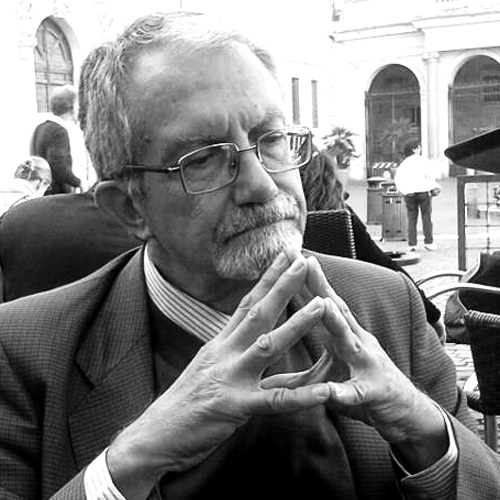



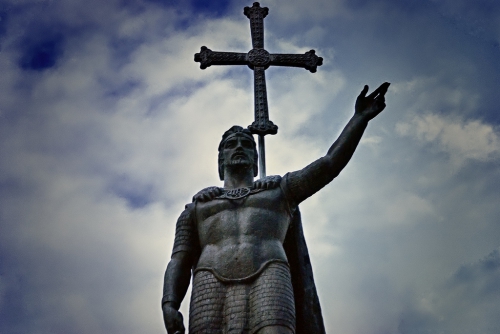

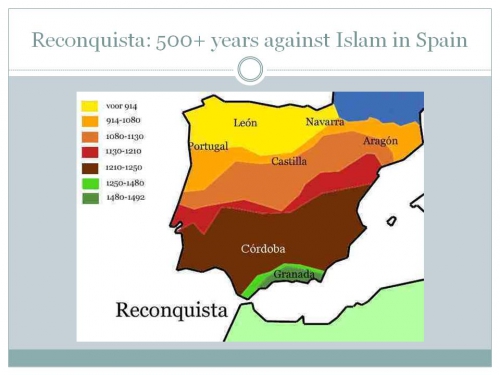

 del.icio.us
del.icio.us
 Digg
Digg

 C’est pour rompre avec cet obscurantisme officiel que j’invite le lecteur à parcourir quelques extraits du premier chapitre de l’excellente étude de l’historien britannique Norman Cohn, Les Fanatiques de l’Apocalypse (1957). Au travers du cas particulier du millénarisme antique et médiéval, on peut aisément s’apercevoir que la religion n’est pas une force transhistorique flottant au-dessus de la vie sociale, mais au contraire un produit de l’activité des hommes, fluctuant dans les remous de l’Histoire.
C’est pour rompre avec cet obscurantisme officiel que j’invite le lecteur à parcourir quelques extraits du premier chapitre de l’excellente étude de l’historien britannique Norman Cohn, Les Fanatiques de l’Apocalypse (1957). Au travers du cas particulier du millénarisme antique et médiéval, on peut aisément s’apercevoir que la religion n’est pas une force transhistorique flottant au-dessus de la vie sociale, mais au contraire un produit de l’activité des hommes, fluctuant dans les remous de l’Histoire. « Déjà les livres prophétiques de l’Ancien Testament, dont certains remontent au VIIIème siècle, décrivaient une immense catastrophe cosmique, dont émergeraient une Palestine qui ne serait rien de moins qu’un nouvel Éden, un paradis reconquis. Ayant négligé son Dieu, le peuple élu devait connaître la famine, la peste, la guerre et la captivité, avant d’être soumis à un jugement qui, par sa sévérité, effectuerait une rupture totale avec un passé coupable. D’abord viendra le Jour de Jéhovah, le jour de colère. Le soleil, la lune et la étoiles seront enveloppés de ténèbres, les cieux se replieront comme un parchemin qu’on roule, et la terre tremblera. Alors sonnera l’heure du Jugement qui verra les mécréants (c’est-à-dire les élus qui n’auront pas eu foi dans leur Seigneur et les païens, ennemis d’Israël) jugés et éliminés, sinon totalement anéantis. Mais ce ne sera pas tout : certains Juifs, « les restes salvifiques », survivront à ces châtiments et deviendront l’instrument des desseins de Dieu. Le peuple élu ainsi amendé et régénéré, Jéhovah renoncera à sa vengeance et se muera en Libérateur. Les Justes […] se regrouperont en Palestine et Jéhovah viendra s’établir parmi eux. Il sera leur Seigneur et leur Juge. Il régnera sur Jérusalem reconstruite, sur Sion devenue capitale spirituelle du monde, vers laquelle convergeront tous les peuples. […]
« Déjà les livres prophétiques de l’Ancien Testament, dont certains remontent au VIIIème siècle, décrivaient une immense catastrophe cosmique, dont émergeraient une Palestine qui ne serait rien de moins qu’un nouvel Éden, un paradis reconquis. Ayant négligé son Dieu, le peuple élu devait connaître la famine, la peste, la guerre et la captivité, avant d’être soumis à un jugement qui, par sa sévérité, effectuerait une rupture totale avec un passé coupable. D’abord viendra le Jour de Jéhovah, le jour de colère. Le soleil, la lune et la étoiles seront enveloppés de ténèbres, les cieux se replieront comme un parchemin qu’on roule, et la terre tremblera. Alors sonnera l’heure du Jugement qui verra les mécréants (c’est-à-dire les élus qui n’auront pas eu foi dans leur Seigneur et les païens, ennemis d’Israël) jugés et éliminés, sinon totalement anéantis. Mais ce ne sera pas tout : certains Juifs, « les restes salvifiques », survivront à ces châtiments et deviendront l’instrument des desseins de Dieu. Le peuple élu ainsi amendé et régénéré, Jéhovah renoncera à sa vengeance et se muera en Libérateur. Les Justes […] se regrouperont en Palestine et Jéhovah viendra s’établir parmi eux. Il sera leur Seigneur et leur Juge. Il régnera sur Jérusalem reconstruite, sur Sion devenue capitale spirituelle du monde, vers laquelle convergeront tous les peuples. […] On retrouve là l’essentiel de ce qui allait devenir le thème central de l’eschatologie révolutionnaire. L’univers est dominé par une puissance maléfique et tyrannique dont la capacité de destruction est infinie, puissance d’ailleurs conçue comme surhumaine et démoniaque. Sous cette dictature, les outrages se multiplient, les souffrances des victimes deviennent de plus en plus intolérables, jusqu’à ce que sonne l’heure où les saints de Dieu seront à même de se dresser pour l’abattre. Alors les saints eux-mêmes, le peuple élu, ce peuple saint, qui n’a cessé de gémir sous le joug de l’oppresseur, héritera à son tour de l’hégémonie universelle. Ce sera l’apogée de l’histoire. Le Royaume des Saints surpassera en gloire tous les règnes antérieurs : bien plus, il n’aura pas de successeurs. C’est par cette chimère que l’apocalyptique juive et ses nombreux dérivés, devaient exercer une incomparable fascination sur tous les insurgés, sur tous les mécontents à venir. » (p.16-19)
On retrouve là l’essentiel de ce qui allait devenir le thème central de l’eschatologie révolutionnaire. L’univers est dominé par une puissance maléfique et tyrannique dont la capacité de destruction est infinie, puissance d’ailleurs conçue comme surhumaine et démoniaque. Sous cette dictature, les outrages se multiplient, les souffrances des victimes deviennent de plus en plus intolérables, jusqu’à ce que sonne l’heure où les saints de Dieu seront à même de se dresser pour l’abattre. Alors les saints eux-mêmes, le peuple élu, ce peuple saint, qui n’a cessé de gémir sous le joug de l’oppresseur, héritera à son tour de l’hégémonie universelle. Ce sera l’apogée de l’histoire. Le Royaume des Saints surpassera en gloire tous les règnes antérieurs : bien plus, il n’aura pas de successeurs. C’est par cette chimère que l’apocalyptique juive et ses nombreux dérivés, devaient exercer une incomparable fascination sur tous les insurgés, sur tous les mécontents à venir. » (p.16-19) « Au IIIème siècle eut lieu la première tentative visant à discréditer les doctrines chiliastiques : Origène, le plus influent peut-être des théologiens de l’Église, assure en effet que l’avènement du Royaume se situera non pas dans l’espace et dans le temps, mais uniquement dans l’âme des fidèles. A une eschatologie millénariste collective, il substitue donc une eschatologie de l’âme individuelle. […] De fait, ce déplacement d’intérêt répond admirablement aux besoins d’une Église désormais organisée, jouissant d’une paix pratiquement ininterrompue et d’un statut universellement admis. Lorsqu’au IVème siècle, le christianisme établit son hégémonie sur le monde méditerranéen et devint la religion officielle de l’Empire, l’Église prit de plus en plus nettement ses distances à l’égard des théories chiliastiques. L’Église catholique, institutionnalisée, puissante et prospère, suivait une routine solidement établie, et ses responsables n’éprouvaient aucune envie de voir les chrétiens se cramponner à des rêves démodés et trompeurs d’un nouveau paradis terrestre. Au début du Vème siècle, saint Augustin élabora la doctrine correspondant à ces circonstances nouvelles. La Cité de Dieu explique que l’Apocalypse doit être interprétée comme une allégorie spirituelle. Quant au millénium, la naissance du christianisme en avait marqué l’avènement et l’Église en était la réalisation sans faille. Cette théorie prit rapidement valeur de dogme, au point que le Concile d’Éphèse (431) condamna la croyance au Millénium comme une superstition aberrante. » (p.32)
« Au IIIème siècle eut lieu la première tentative visant à discréditer les doctrines chiliastiques : Origène, le plus influent peut-être des théologiens de l’Église, assure en effet que l’avènement du Royaume se situera non pas dans l’espace et dans le temps, mais uniquement dans l’âme des fidèles. A une eschatologie millénariste collective, il substitue donc une eschatologie de l’âme individuelle. […] De fait, ce déplacement d’intérêt répond admirablement aux besoins d’une Église désormais organisée, jouissant d’une paix pratiquement ininterrompue et d’un statut universellement admis. Lorsqu’au IVème siècle, le christianisme établit son hégémonie sur le monde méditerranéen et devint la religion officielle de l’Empire, l’Église prit de plus en plus nettement ses distances à l’égard des théories chiliastiques. L’Église catholique, institutionnalisée, puissante et prospère, suivait une routine solidement établie, et ses responsables n’éprouvaient aucune envie de voir les chrétiens se cramponner à des rêves démodés et trompeurs d’un nouveau paradis terrestre. Au début du Vème siècle, saint Augustin élabora la doctrine correspondant à ces circonstances nouvelles. La Cité de Dieu explique que l’Apocalypse doit être interprétée comme une allégorie spirituelle. Quant au millénium, la naissance du christianisme en avait marqué l’avènement et l’Église en était la réalisation sans faille. Cette théorie prit rapidement valeur de dogme, au point que le Concile d’Éphèse (431) condamna la croyance au Millénium comme une superstition aberrante. » (p.32) « Cet état de choses se mit à évoluer à partir du XIème siècle, plusieurs régions d’Europe bénéficiant d’une paix assez durable pour permettre l’accroissement de la population et l’essor du commerce. […] Dès le XIème siècle, le Nord-Est de la France, les Pays-Bas et la vallée du Rhin avaient atteint une densité de population telle que le système agricole traditionnel se révélait incapable d’en assurer la subsistance. Nombre de paysans se mirent à défricher des forêts, des marécages et des franges côtières, ou prirent la route de l’Est pour participer à la grande colonisation allemande des terres slaves : ces pionniers eurent généralement la vie plus facile. Restaient de nombreux paysans sans terre, ou que leur lopin ne suffisait pas à nourrir : il leur fallait donc se débrouiller tant bien que mal. Une partie de cette population excédentaire alla grossir les rangs du prolétariat rural. D’autres affluèrent dans les nouveaux centres urbains et industriels pour donner naissance à un prolétariat urbain. » (p.48)
« Cet état de choses se mit à évoluer à partir du XIème siècle, plusieurs régions d’Europe bénéficiant d’une paix assez durable pour permettre l’accroissement de la population et l’essor du commerce. […] Dès le XIème siècle, le Nord-Est de la France, les Pays-Bas et la vallée du Rhin avaient atteint une densité de population telle que le système agricole traditionnel se révélait incapable d’en assurer la subsistance. Nombre de paysans se mirent à défricher des forêts, des marécages et des franges côtières, ou prirent la route de l’Est pour participer à la grande colonisation allemande des terres slaves : ces pionniers eurent généralement la vie plus facile. Restaient de nombreux paysans sans terre, ou que leur lopin ne suffisait pas à nourrir : il leur fallait donc se débrouiller tant bien que mal. Une partie de cette population excédentaire alla grossir les rangs du prolétariat rural. D’autres affluèrent dans les nouveaux centres urbains et industriels pour donner naissance à un prolétariat urbain. » (p.48)
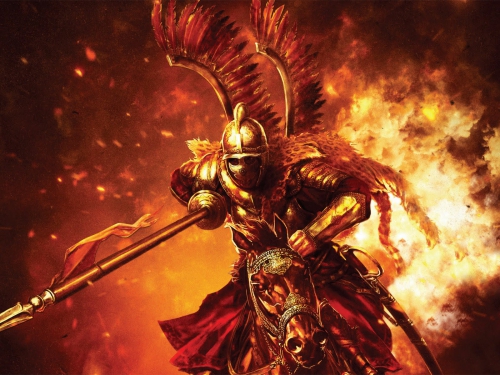



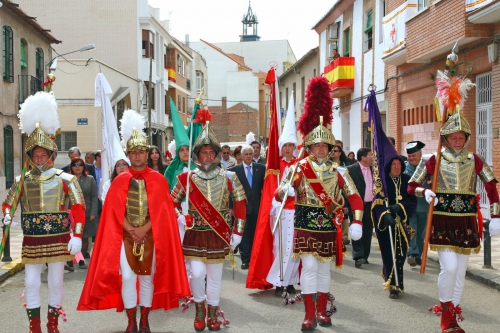
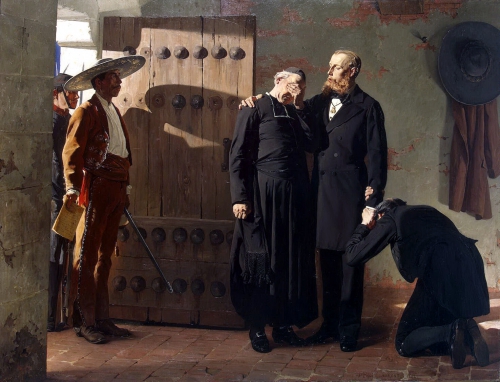
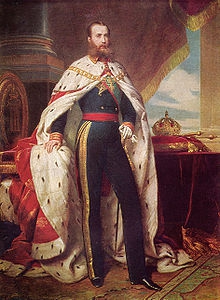 So ended the short life of Maximilian, and the much briefer life of Imperial Hapsburg Mexico. Often viewed as a sort of black comedy out of Evelyn Waugh—aristocratic simpleton moves to the tropics and gets lynched by noble savages—the Maximilian story is a grave one that reverberates to the present day. Put simply, Maximilian’s rule was a valiant attempt to turn a perpetually bankrupt, disorderly Mexico into something else—an orderly, prosperous, Europeanized country. A transformed Mexico, newly planted with arrivals from Austria, Hungary, Germany, France and, perhaps most importantly, the Confederate States of America.
So ended the short life of Maximilian, and the much briefer life of Imperial Hapsburg Mexico. Often viewed as a sort of black comedy out of Evelyn Waugh—aristocratic simpleton moves to the tropics and gets lynched by noble savages—the Maximilian story is a grave one that reverberates to the present day. Put simply, Maximilian’s rule was a valiant attempt to turn a perpetually bankrupt, disorderly Mexico into something else—an orderly, prosperous, Europeanized country. A transformed Mexico, newly planted with arrivals from Austria, Hungary, Germany, France and, perhaps most importantly, the Confederate States of America.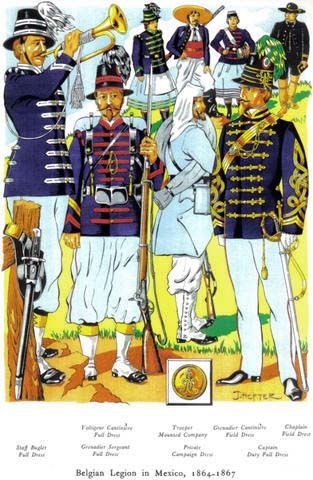 The U.S.’s persistent and calculated support for the rebels shows that Maximilian’s fall was neither inevitable nor foreordained. Which makes it very compelling to imagine what might have become of Mexico had Maximilian’s cause prevailed. Would Imperial Hapsburg Mexico have become a sort of Austria-Hungary of the tropics, full of ski resorts, opera festivals and retirement chalet-condos in the Sierra Madre? Perhaps the current Hapsburg heir would be Emperor of Mexico.
The U.S.’s persistent and calculated support for the rebels shows that Maximilian’s fall was neither inevitable nor foreordained. Which makes it very compelling to imagine what might have become of Mexico had Maximilian’s cause prevailed. Would Imperial Hapsburg Mexico have become a sort of Austria-Hungary of the tropics, full of ski resorts, opera festivals and retirement chalet-condos in the Sierra Madre? Perhaps the current Hapsburg heir would be Emperor of Mexico.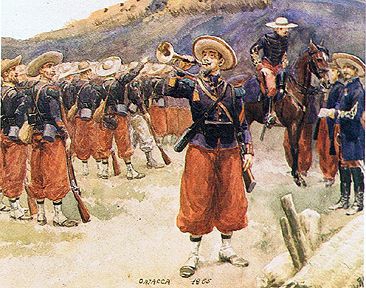 The many evasive characterizations of the Maximilian story—European interference, imperial aggrandizement, debt-collection, et al.—all avoid the fundamental reason why Maximilian was brought in. And that was the horrifying disorder and lawlessness that had characterized Mexico in the generation or so since independence. One can argue that disorder is just innate to Mexico. Regardless, the chaos had become particularly noticeable by the early 1860s, when after years of governmental corruption, the Benito Juarez administration announced it would default on the loans made by overseas investors. (The crisis that precipitated the 1862 military intervention by France, along with Britain and Spain.) A good example of this corruption, or incompetence, is shown by the Veracruz-to-Mexico City railway mentioned above. This had originally been planned, and concession granted, in 1837. But construction of the 300-mile route never really commenced till 1865, under Maximilian. At this time Mexico did not have a single long-distance railway.
The many evasive characterizations of the Maximilian story—European interference, imperial aggrandizement, debt-collection, et al.—all avoid the fundamental reason why Maximilian was brought in. And that was the horrifying disorder and lawlessness that had characterized Mexico in the generation or so since independence. One can argue that disorder is just innate to Mexico. Regardless, the chaos had become particularly noticeable by the early 1860s, when after years of governmental corruption, the Benito Juarez administration announced it would default on the loans made by overseas investors. (The crisis that precipitated the 1862 military intervention by France, along with Britain and Spain.) A good example of this corruption, or incompetence, is shown by the Veracruz-to-Mexico City railway mentioned above. This had originally been planned, and concession granted, in 1837. But construction of the 300-mile route never really commenced till 1865, under Maximilian. At this time Mexico did not have a single long-distance railway.
 Pour son dernier et très ambitieux ouvrage, l’historien africanologue, auquel on doit déjà une Histoire de l’Egypte (1) et une autre du Maroc (2), a étudié son et plutôt ses sujets non pas géographiquement, mais chronologiquement, comme l’avait fait il y a trente ans Jean Duché pour sa passionnante Histoire du Monde (3). Choix judicieux car les destins des contrées concernées, et qui, depuis l’Antiquité ont durablement été soumises aux mêmes maîtres, l’Empire romain puis l’Empire ottoman s’interpénètrent. Avec la lecture « horizontale » adoptée par Bernard Lugan, on discerne mieux les interactions, les similitudes mais aussi les contradictions entre les cinq composantes de la rive sud de la Méditerranée, avec une inexorable constante : le facteur ethnique.
Pour son dernier et très ambitieux ouvrage, l’historien africanologue, auquel on doit déjà une Histoire de l’Egypte (1) et une autre du Maroc (2), a étudié son et plutôt ses sujets non pas géographiquement, mais chronologiquement, comme l’avait fait il y a trente ans Jean Duché pour sa passionnante Histoire du Monde (3). Choix judicieux car les destins des contrées concernées, et qui, depuis l’Antiquité ont durablement été soumises aux mêmes maîtres, l’Empire romain puis l’Empire ottoman s’interpénètrent. Avec la lecture « horizontale » adoptée par Bernard Lugan, on discerne mieux les interactions, les similitudes mais aussi les contradictions entre les cinq composantes de la rive sud de la Méditerranée, avec une inexorable constante : le facteur ethnique.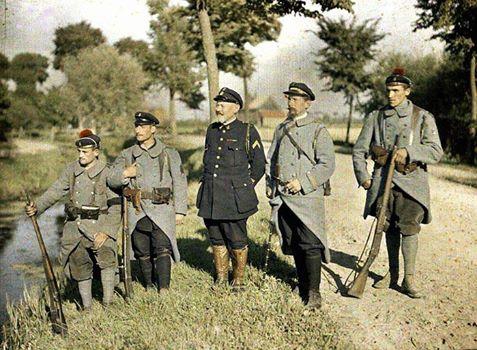
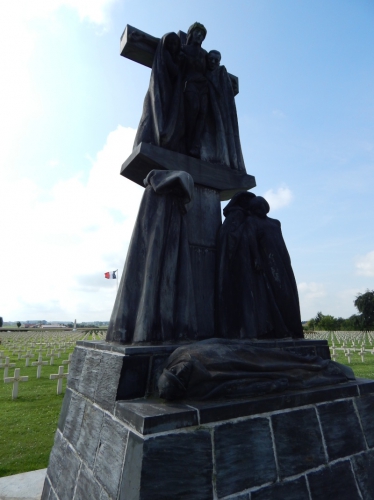
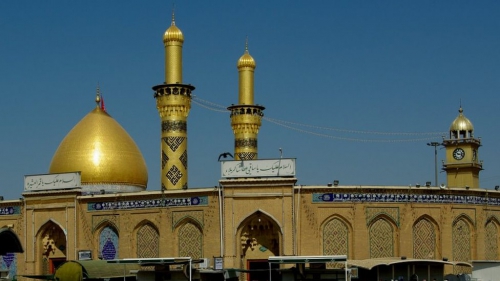
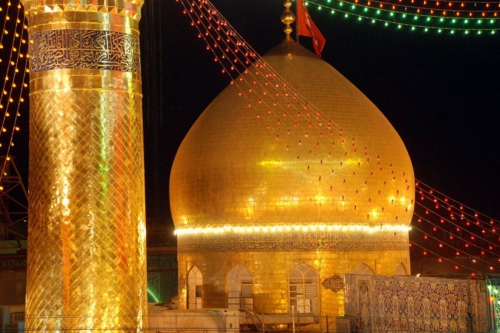

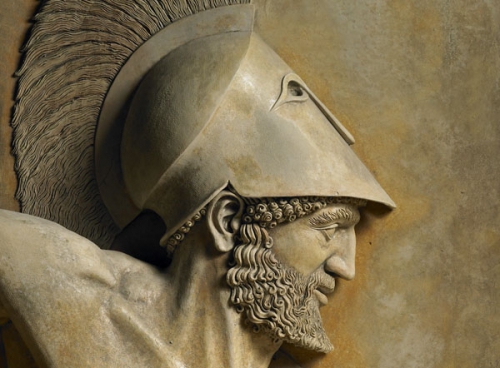
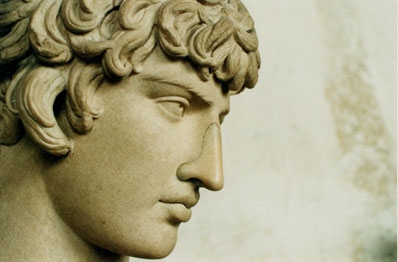 The ancient Greeks are more than strange beings so far as post-60s “liberal democracy” is concerned. Certainly, the Greeks had that egalitarian and individualist sensitivity that Westerners are so known for.
The ancient Greeks are more than strange beings so far as post-60s “liberal democracy” is concerned. Certainly, the Greeks had that egalitarian and individualist sensitivity that Westerners are so known for.
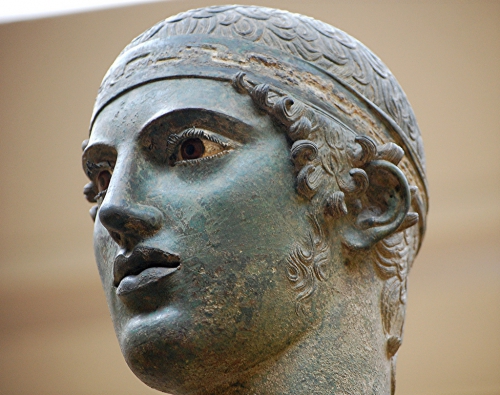
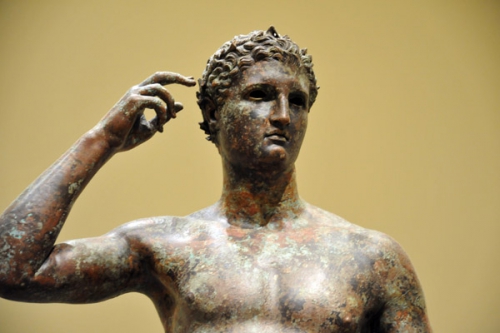

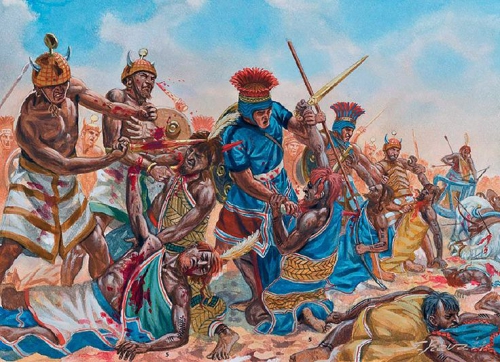


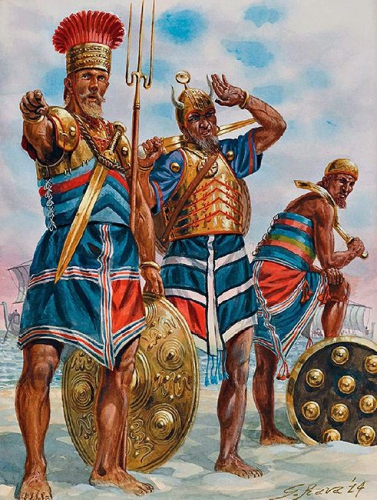

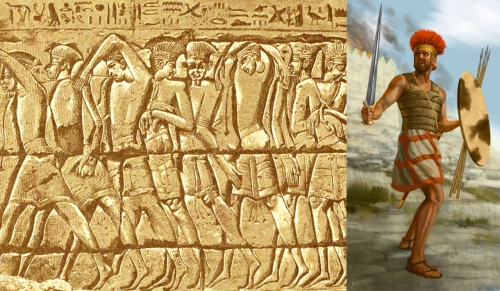

 L’idéologie, domaine des idées, est la chasse gardée des intellos. Ceux-ci alimentent les politiciens ignares par des constructions abstraites, vendables aux masses, autrement dit une bouillie où l’on se pose surtout ‘contre’ et rarement ‘pour’. « Il y a les préjugés de tout ce monde ‘affranchi’. Il y a là une masse de plus en plus figée, de plus en plus lourde, de plus en plus écrasante. On est contre ceci, contre cela, ce qui fait qu’on est pour le néant qui s’insinue partout. Et tout cela n’est que faible vantardise » p.1131. Yaka…
L’idéologie, domaine des idées, est la chasse gardée des intellos. Ceux-ci alimentent les politiciens ignares par des constructions abstraites, vendables aux masses, autrement dit une bouillie où l’on se pose surtout ‘contre’ et rarement ‘pour’. « Il y a les préjugés de tout ce monde ‘affranchi’. Il y a là une masse de plus en plus figée, de plus en plus lourde, de plus en plus écrasante. On est contre ceci, contre cela, ce qui fait qu’on est pour le néant qui s’insinue partout. Et tout cela n’est que faible vantardise » p.1131. Yaka…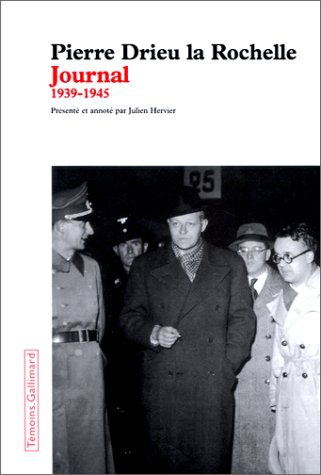 On parle aujourd’hui volontiers dans les meetings de 1789, de 1848, voire de 1871. Mais la grande politique va bien au-delà, de Gaulle la reprendra à son compte et Mitterrand en jouera. Marine Le Pen encense Jeanne d’Arc (comme Drieu) et Mélenchon tente de récupérer les grandes heures populaires, mais avec le regard myope du démagogue arrêté à 1793. Or « il y avait eu la raison française, ce jaillissement passionné, orgueilleux, furieux du XIIè siècle des épopées, des cathédrales, des philosophies chrétiennes, de la sculpture, des vitraux, des enluminures, des croisades. Les Français avaient été des soldats, des moines, des architectes, des peintres, des poètes, des maris et des pères. Ils avaient fait des enfants, ils avaient construit, ils avaient tué, ils s’étaient fait tuer. Ils s’étaient sacrifiés et ils avaient sacrifié. Maintenant, cela finissait. Ici, et en Europe. ‘Le peuple de Descartes’. Mais Descartes encore embrassait la foi et la raison. Maintenant, qu’était ce rationalisme qui se réclamait de lui ? Une sentimentalité étroite et radotante, toute repliée sur l’imitation rabougrie de l’ancienne courbe créatrice, petite tige fanée » p.1221. Marc Bloch, qui n’était pas fasciste puisque juif, historien et résistant, était d’accord avec Drieu pour accoler Jeanne d’Arc à 1789, le suffrage universel au sacre de Reims. Pour lui, tout ça était la France : sa mystique. Ce qui meut la grande politique et ce qui fait la différence entre la gestion d’un conseil général et la gestion d’un pays.
On parle aujourd’hui volontiers dans les meetings de 1789, de 1848, voire de 1871. Mais la grande politique va bien au-delà, de Gaulle la reprendra à son compte et Mitterrand en jouera. Marine Le Pen encense Jeanne d’Arc (comme Drieu) et Mélenchon tente de récupérer les grandes heures populaires, mais avec le regard myope du démagogue arrêté à 1793. Or « il y avait eu la raison française, ce jaillissement passionné, orgueilleux, furieux du XIIè siècle des épopées, des cathédrales, des philosophies chrétiennes, de la sculpture, des vitraux, des enluminures, des croisades. Les Français avaient été des soldats, des moines, des architectes, des peintres, des poètes, des maris et des pères. Ils avaient fait des enfants, ils avaient construit, ils avaient tué, ils s’étaient fait tuer. Ils s’étaient sacrifiés et ils avaient sacrifié. Maintenant, cela finissait. Ici, et en Europe. ‘Le peuple de Descartes’. Mais Descartes encore embrassait la foi et la raison. Maintenant, qu’était ce rationalisme qui se réclamait de lui ? Une sentimentalité étroite et radotante, toute repliée sur l’imitation rabougrie de l’ancienne courbe créatrice, petite tige fanée » p.1221. Marc Bloch, qui n’était pas fasciste puisque juif, historien et résistant, était d’accord avec Drieu pour accoler Jeanne d’Arc à 1789, le suffrage universel au sacre de Reims. Pour lui, tout ça était la France : sa mystique. Ce qui meut la grande politique et ce qui fait la différence entre la gestion d’un conseil général et la gestion d’un pays. Mais la démocratie parlementaire a montré que la mystique pouvait surgir, comme sous Churchill, de Gaulle, Kennedy, Obama. Sauf que le parlementarisme reprend ses droits et assure la distance nécessaire entre l’individu et la masse nationale. Délibérations, pluralisme et État de droit sont les processus et les garde-fous de nos démocraties. Ils permettent l’équilibre entre la vie personnelle de chacun (libre d’aller à ses affaires) et la vie collective de l’État-nation (en charge des fonctions régaliennes de la justice, la défense et les infrastructures). Notre système requiert des administrateurs rationnels plus que des leaders charismatiques, malgré le culte du chef réintroduit par la Vè République.
Mais la démocratie parlementaire a montré que la mystique pouvait surgir, comme sous Churchill, de Gaulle, Kennedy, Obama. Sauf que le parlementarisme reprend ses droits et assure la distance nécessaire entre l’individu et la masse nationale. Délibérations, pluralisme et État de droit sont les processus et les garde-fous de nos démocraties. Ils permettent l’équilibre entre la vie personnelle de chacun (libre d’aller à ses affaires) et la vie collective de l’État-nation (en charge des fonctions régaliennes de la justice, la défense et les infrastructures). Notre système requiert des administrateurs rationnels plus que des leaders charismatiques, malgré le culte du chef réintroduit par la Vè République.


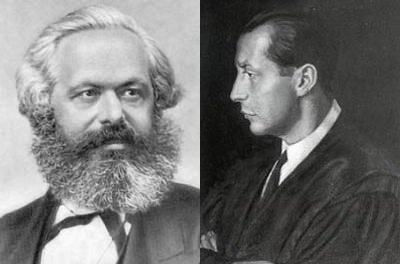
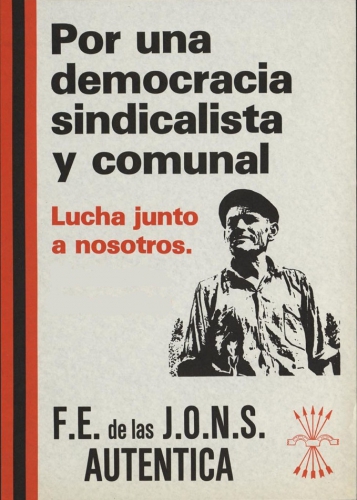 Si bien es verdad que en la Falange más embrionaria y en los primeros pasos de José Antonio en ésta se puede observar un marcado antimarxismo considerado por algunos como un "residuo" de su pasado monárquico y reaccionario, esta característica fue progresivamente desapareciendo y llegó a declarar en el diario La Voz de Madrid el 14 de febrero de 1936: "Los antialgo, sea lo que sea este algo, se me presentan imbuidos de reminiscencia del señoritismo español, que se opone irreflexiva, pero activamente, a lo que él no comparte. No soy ni antimarxista siquiera, ni anticomunista, ni... antinada. Los anti están desterrados de mi léxico como si fueran tapones para las ideas".
Si bien es verdad que en la Falange más embrionaria y en los primeros pasos de José Antonio en ésta se puede observar un marcado antimarxismo considerado por algunos como un "residuo" de su pasado monárquico y reaccionario, esta característica fue progresivamente desapareciendo y llegó a declarar en el diario La Voz de Madrid el 14 de febrero de 1936: "Los antialgo, sea lo que sea este algo, se me presentan imbuidos de reminiscencia del señoritismo español, que se opone irreflexiva, pero activamente, a lo que él no comparte. No soy ni antimarxista siquiera, ni anticomunista, ni... antinada. Los anti están desterrados de mi léxico como si fueran tapones para las ideas". Además de aceptar, como era de esperar, las teorías marxistas sobre el devenir del capitalismo -¿Acaso no se han cumplido la gran mayoría, si no todas, las "profecías" marxistas sobre el capitalismo?- José Antonio recogió de Marx, también, la crítica a la propiedad capitalista. Prueda de ello fueron aquellas palabas de Primo de Rivera en 1935,"Pensad a lo que ha venido a quedar reducido el hombre europeo por obra del capitalismo. Ya no tiene casa, ya no tiene patrimonio, ya no tiene individualidad, ya no tiene habilidad artesana, ya es un simple número de aglomeraciones. [...] La propiedad capitalista es fría e implacable: en el mejor de los casos, no cobra la renta, pero se desentiende del destino de los sometidos. [...]mientras que ahora se muere un obrero y saben los grandes señores de la industria capitalista que tienen cientos de miles de famélicos esperando a la puerta para sustituirle. Una figura, en parte torva y en parte atrayente, la figura de Carlos Marx, vaticinó todo este espectáculo a que estamos asistiendo, de la crisis del capitalismo. Ahora todos nos hablan por ahí de si son marxistas o si son antimarxistas. Yo os pregunto, con ese rigor de examen de conciencia que estoy comunicando a mis palabras: ¿Qué quiere decir el ser antimarxista? ¿Quiere decir que no apetece el cumplimiento de las previsiones de Marx? Entonces estamos todos de acuerdo. ¿Quiere decir que se equivocó Marx en sus previsiones? Entonces los que se equivocan son los que le achacan ese error. Las previsiones de Marx se vienen cumpliendo más o menos de prisa, pero implacablemente. Se va a la concentración de capitales; se va a la proletarización de las masas, y se va, como final de todo, a la revolución social, que tendrá un durísimo período de dictadura comunista. [...]también el capitalismo es internacional y materialista. Por eso no queremos ni lo uno ni lo otro; por eso queremos evitar –porque creemos en su aserto– el cumplimiento de las profecías de Carlos Marx. Pero lo queremos resueltamente; no lo queremos como esos partidos antimarxistas que andan por ahí y creen que el cumplimiento inexorable de unas leyes económicas e históricas se atenúa diciendo a los obreros unas buenas palabras y mandándoles unos abriguitos de punto para sus niños. Si se tiene la seria voluntad de impedir que lleguen los resultados previstos en el vaticinio marxista, no hay más remedio que desmontar el armatoste cuyo funcionamiento lleva implacablemente a esas consecuencias: desmontar el armatoste capitalista que conduce a la revolución social, a la dictadura rusa. Desmontarlo, pero ¿para sustituirlo con qué?[...]". (4)
Además de aceptar, como era de esperar, las teorías marxistas sobre el devenir del capitalismo -¿Acaso no se han cumplido la gran mayoría, si no todas, las "profecías" marxistas sobre el capitalismo?- José Antonio recogió de Marx, también, la crítica a la propiedad capitalista. Prueda de ello fueron aquellas palabas de Primo de Rivera en 1935,"Pensad a lo que ha venido a quedar reducido el hombre europeo por obra del capitalismo. Ya no tiene casa, ya no tiene patrimonio, ya no tiene individualidad, ya no tiene habilidad artesana, ya es un simple número de aglomeraciones. [...] La propiedad capitalista es fría e implacable: en el mejor de los casos, no cobra la renta, pero se desentiende del destino de los sometidos. [...]mientras que ahora se muere un obrero y saben los grandes señores de la industria capitalista que tienen cientos de miles de famélicos esperando a la puerta para sustituirle. Una figura, en parte torva y en parte atrayente, la figura de Carlos Marx, vaticinó todo este espectáculo a que estamos asistiendo, de la crisis del capitalismo. Ahora todos nos hablan por ahí de si son marxistas o si son antimarxistas. Yo os pregunto, con ese rigor de examen de conciencia que estoy comunicando a mis palabras: ¿Qué quiere decir el ser antimarxista? ¿Quiere decir que no apetece el cumplimiento de las previsiones de Marx? Entonces estamos todos de acuerdo. ¿Quiere decir que se equivocó Marx en sus previsiones? Entonces los que se equivocan son los que le achacan ese error. Las previsiones de Marx se vienen cumpliendo más o menos de prisa, pero implacablemente. Se va a la concentración de capitales; se va a la proletarización de las masas, y se va, como final de todo, a la revolución social, que tendrá un durísimo período de dictadura comunista. [...]también el capitalismo es internacional y materialista. Por eso no queremos ni lo uno ni lo otro; por eso queremos evitar –porque creemos en su aserto– el cumplimiento de las profecías de Carlos Marx. Pero lo queremos resueltamente; no lo queremos como esos partidos antimarxistas que andan por ahí y creen que el cumplimiento inexorable de unas leyes económicas e históricas se atenúa diciendo a los obreros unas buenas palabras y mandándoles unos abriguitos de punto para sus niños. Si se tiene la seria voluntad de impedir que lleguen los resultados previstos en el vaticinio marxista, no hay más remedio que desmontar el armatoste cuyo funcionamiento lleva implacablemente a esas consecuencias: desmontar el armatoste capitalista que conduce a la revolución social, a la dictadura rusa. Desmontarlo, pero ¿para sustituirlo con qué?[...]". (4)
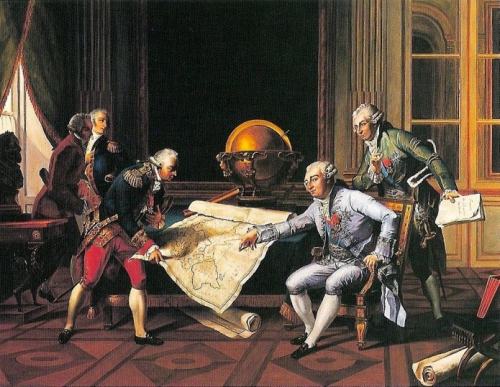

 C’est le Roi de France Louis XVI, en personne, qui décida de mettre sur pieds une expédition à travers le globe. Projet exceptionnel par son ambition et ses moyens, le Roi n’hésita pas à débloquer des fonds importants, à mobiliser le capitaine de vaisseaux Lapérouse, réputé comme l’un des meilleurs navigateurs français, à l’époque. Ce projet lui tiens à cœur, Louis XVI était tout sauf un obscurantiste, un ignare, il était passionné par l’astronomie, la géométrie, les mathématiques, les sciences en général. Il était polyglotte, parlant en effet parfaitement le Latin, parlait l’Allemand et l’Espagnol, et excellait en Anglais. Il était féru d’Histoire, de géographie et maîtrisait très bien l’économie. Excellent cavalier, il était aussi passionné par l’horlogerie et la serrurerie. Un roi Catholique, beaucoup plus intrigué par le monde qui l’entoure, par les sciences, par le bien-être de ses peuples que ne peut l’être les différents présidents de toutes les républiques françaises.
C’est le Roi de France Louis XVI, en personne, qui décida de mettre sur pieds une expédition à travers le globe. Projet exceptionnel par son ambition et ses moyens, le Roi n’hésita pas à débloquer des fonds importants, à mobiliser le capitaine de vaisseaux Lapérouse, réputé comme l’un des meilleurs navigateurs français, à l’époque. Ce projet lui tiens à cœur, Louis XVI était tout sauf un obscurantiste, un ignare, il était passionné par l’astronomie, la géométrie, les mathématiques, les sciences en général. Il était polyglotte, parlant en effet parfaitement le Latin, parlait l’Allemand et l’Espagnol, et excellait en Anglais. Il était féru d’Histoire, de géographie et maîtrisait très bien l’économie. Excellent cavalier, il était aussi passionné par l’horlogerie et la serrurerie. Un roi Catholique, beaucoup plus intrigué par le monde qui l’entoure, par les sciences, par le bien-être de ses peuples que ne peut l’être les différents présidents de toutes les républiques françaises.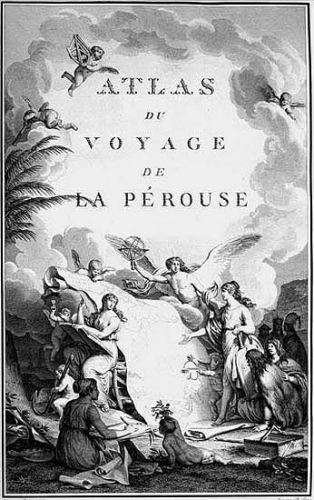 «Sa Majesté ayant fait armer au port de Brest les frégates « La Boussole », commandée par le sieur de Lapérouse, et « L’Astrolabe », par le sieur de Langle, capitaines de ses vaisseaux, pour être employées dans un voyage de découvertes ; elle va faire connaitre au sieur de Lapérouse, à qui elle a donné le commandement en chef de ces deux bâtiments, le service qu’il aura a remplir dans l’expédition importante dont elle lui a confié la conduite. Les différents objets que Sa Majesté a eus en vue en ordonnant ce voyage, ont exigé que la présente Instruction fut divisée en plusieurs parties, afin qu’elle put en expliquer plus clairement au sieur de Lapérouse, les intentions particulières de Sa Majesté sur chacun des objets dont il devra s’occuper.
«Sa Majesté ayant fait armer au port de Brest les frégates « La Boussole », commandée par le sieur de Lapérouse, et « L’Astrolabe », par le sieur de Langle, capitaines de ses vaisseaux, pour être employées dans un voyage de découvertes ; elle va faire connaitre au sieur de Lapérouse, à qui elle a donné le commandement en chef de ces deux bâtiments, le service qu’il aura a remplir dans l’expédition importante dont elle lui a confié la conduite. Les différents objets que Sa Majesté a eus en vue en ordonnant ce voyage, ont exigé que la présente Instruction fut divisée en plusieurs parties, afin qu’elle put en expliquer plus clairement au sieur de Lapérouse, les intentions particulières de Sa Majesté sur chacun des objets dont il devra s’occuper. La dernière partie est un condensé de mesures à appliquer afin de garantir aux équipages une bonne santé mentale et physiologique , des repas nutritifs, une bonne hygiène, des vêtements bien entretenus …
La dernière partie est un condensé de mesures à appliquer afin de garantir aux équipages une bonne santé mentale et physiologique , des repas nutritifs, une bonne hygiène, des vêtements bien entretenus … Suite a cette effroyable bataille, Lapérouse embarque sur le «Robuste» pour partir à l’assaut de Terre Neuve. La suite de sa carrière sera riche en événements, il enchaîne campagne sur campagne, au Canada, Terre Neuve, aux Antilles, Ile Bourbon, Inde, Madagascar…
Suite a cette effroyable bataille, Lapérouse embarque sur le «Robuste» pour partir à l’assaut de Terre Neuve. La suite de sa carrière sera riche en événements, il enchaîne campagne sur campagne, au Canada, Terre Neuve, aux Antilles, Ile Bourbon, Inde, Madagascar…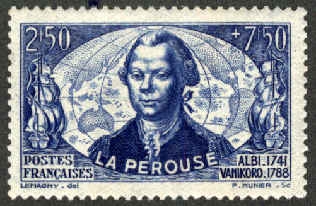 Est-ce que ce genre d’expédition, de projet ambitieux serait possible dans le cadre d’une démocratie, d’un république ?
Est-ce que ce genre d’expédition, de projet ambitieux serait possible dans le cadre d’une démocratie, d’un république ?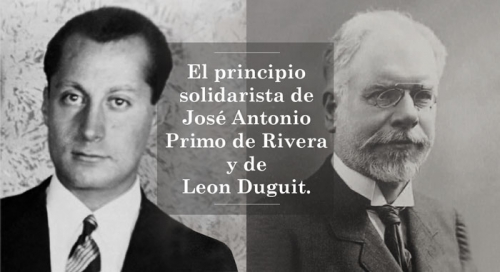
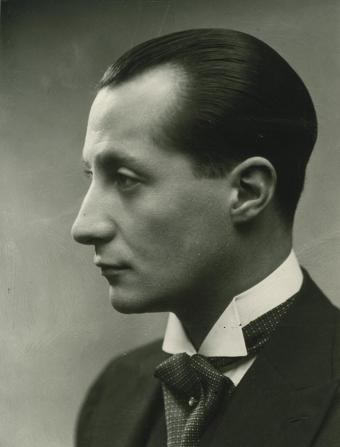
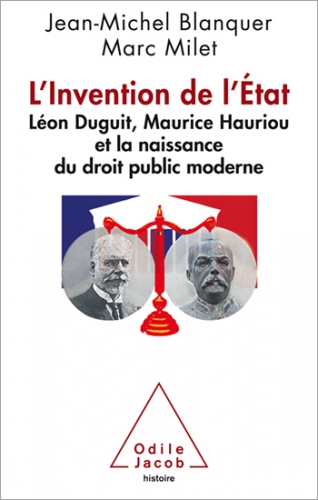
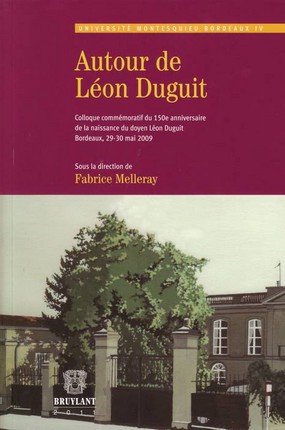

 Longtemps « école des princes » selon Michelet, l’histoire et devenue, au XIXème siècle, à la faveur de l’émancipation progressive des masses populaires, le bien commun de toute la nation. C’est la défaite de 1870, dans le moment qui voit Ernest Renan nous donner sa Réforme intellectuelle et morale que les républicains victorieux introduisent dans l’enseignement primaire l’histoire et la géographie et l’on sait le succès remporté alors par le manuel dû à Ernest Lavisse, maître d’oeuvre par ailleurs d’une impressionnante Histoire de France en quarante volumes, appelée à demeurer une référence savante pendant des décennies. En couverture du Petit Lavisse, l’auteur s’adressait en ces termes à ses jeunes lecteurs : « Enfant, tu dois aimer la France parce que la nature l’a faite belle et parce que son histoire l’a faite grande. » La fin visée par l’histoire ainsi enseignée était l’unité nationale, l’affirmation de la durée inscrite elle même dans la continuité reliant la France monarchique à la nouvelle France républicaine, le rappel de l’humiliation de 1871… L’histoire devait alors contribuer à la formation d’une conscience civique et nationale en un temps où selon Pierre Nora, « l’instituteur et l’officier étaient les deux piliers jumeaux de la Patrie… »
Longtemps « école des princes » selon Michelet, l’histoire et devenue, au XIXème siècle, à la faveur de l’émancipation progressive des masses populaires, le bien commun de toute la nation. C’est la défaite de 1870, dans le moment qui voit Ernest Renan nous donner sa Réforme intellectuelle et morale que les républicains victorieux introduisent dans l’enseignement primaire l’histoire et la géographie et l’on sait le succès remporté alors par le manuel dû à Ernest Lavisse, maître d’oeuvre par ailleurs d’une impressionnante Histoire de France en quarante volumes, appelée à demeurer une référence savante pendant des décennies. En couverture du Petit Lavisse, l’auteur s’adressait en ces termes à ses jeunes lecteurs : « Enfant, tu dois aimer la France parce que la nature l’a faite belle et parce que son histoire l’a faite grande. » La fin visée par l’histoire ainsi enseignée était l’unité nationale, l’affirmation de la durée inscrite elle même dans la continuité reliant la France monarchique à la nouvelle France républicaine, le rappel de l’humiliation de 1871… L’histoire devait alors contribuer à la formation d’une conscience civique et nationale en un temps où selon Pierre Nora, « l’instituteur et l’officier étaient les deux piliers jumeaux de la Patrie… »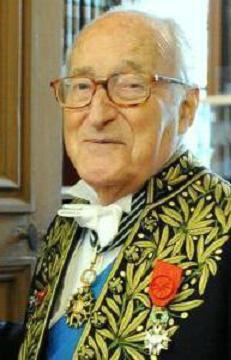 Une première réaction intervient en octobre 1979, avec l’appel lancé par Alain Decaux dans le Figaro-Magazine. Très largement relayé, il rencontre un immense écho et fait largement consensus. Le futur académicien dénonçait l’effondrement des savoirs alors constaté et l’ensemble de la classe politique, bien consciente de l’adhésion que rencontrait son propos, se reconnut dans sa démarche. On vit ainsi Jean-Pierre Chevènement, devenu en 1984 ministre de l’Education nationale, réintroduire vigoureusement à l’école primaire l’enseignement de l’histoire.
Une première réaction intervient en octobre 1979, avec l’appel lancé par Alain Decaux dans le Figaro-Magazine. Très largement relayé, il rencontre un immense écho et fait largement consensus. Le futur académicien dénonçait l’effondrement des savoirs alors constaté et l’ensemble de la classe politique, bien consciente de l’adhésion que rencontrait son propos, se reconnut dans sa démarche. On vit ainsi Jean-Pierre Chevènement, devenu en 1984 ministre de l’Education nationale, réintroduire vigoureusement à l’école primaire l’enseignement de l’histoire.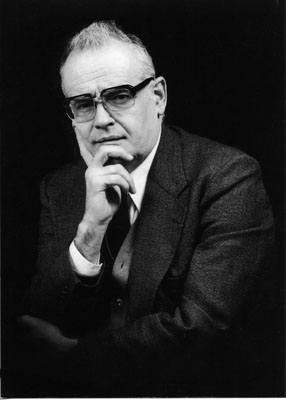 Un enseignement et une transmission solides de l’histoire demeurent à l’évidence indispensables. Elle est en effet un bouclier contre le mensonge qui demeure l’instrument politique que l’on sait : Chateaubriand l’a superbement résumé : « L’historien paraît, chargé de la vengeance des peuples. C’est en vain que Néron prospère, Tacite est déjà né dans l’Empire. » L’histoire est aussi une irremplaçable école de discernement. Au lendemain de la première guerre mondiale, Jacques Bainville annonçait, dans ses Conséquences politiques de la paix, les drames à venir et, dès 1972, Pierre Chaunu prophétisait, dans sa Peste blanche, la crise démographique. Contre le déterminisme de l’école des Annales, l’histoire est le domaine de l’imprévu et de l’inattendu, de l’attentat de Sarajevo à la chute de l’URSS et elle remet à leur place bien des déterminismes supposés « scientifiques ». L’Histoire préserve aussi de l’utopie en ce qu’elle retient tous les faits que, dans son Discours sur l’origine de l’inégalité, Jean-Jacques Rousseau écartait d’emblée. La connaissance du passé entretient aussi la vertu d’admiration propre à la reconnaissance de modèles et l’œuvre de Plutarque fut, de ce point de vue l’école des élites européennes des XVIIème et XVIIIème siècles. L’histoire est aussi la critique du présent et permet d’échapper à l’aveuglement que s’efforcent d’établir les diverses propagandes partisanes. Elle a forgé, au rythme des épreuves endurées et du souvenir des grandes choses accomplies ensemble, le caractère particulier de chaque nation , fondé ainsi la philia qui lie entre eux les membres de la Cité. La connaissance de l’histoire prépare enfin aux épreuves et fournit aux peuples les capacités de résilience nécessaires. Elle indique la voie des redressements, ceux que connut la France au XVème siècle avec l’épopée johannique et ses suites, avec Henri IV qui rétablit la concorde civile après trente ans de guerres religieuses, en 1944 et en 1958 après l’effondrement accablant de 1940 et la décomposition de la IVème République. Au delà de l’homo consumans et de l’homo festivus si bien décrit par le regretté Philippe Murray, l’histoire nous apprend enfin ce que nous sommes, les héritiers d’un passé fait d’épreuves et de grandeurs et les porteurs, dans le temps, d’un avenir que nous devons souhaiter à la hauteur de ce qui nous a précédés.
Un enseignement et une transmission solides de l’histoire demeurent à l’évidence indispensables. Elle est en effet un bouclier contre le mensonge qui demeure l’instrument politique que l’on sait : Chateaubriand l’a superbement résumé : « L’historien paraît, chargé de la vengeance des peuples. C’est en vain que Néron prospère, Tacite est déjà né dans l’Empire. » L’histoire est aussi une irremplaçable école de discernement. Au lendemain de la première guerre mondiale, Jacques Bainville annonçait, dans ses Conséquences politiques de la paix, les drames à venir et, dès 1972, Pierre Chaunu prophétisait, dans sa Peste blanche, la crise démographique. Contre le déterminisme de l’école des Annales, l’histoire est le domaine de l’imprévu et de l’inattendu, de l’attentat de Sarajevo à la chute de l’URSS et elle remet à leur place bien des déterminismes supposés « scientifiques ». L’Histoire préserve aussi de l’utopie en ce qu’elle retient tous les faits que, dans son Discours sur l’origine de l’inégalité, Jean-Jacques Rousseau écartait d’emblée. La connaissance du passé entretient aussi la vertu d’admiration propre à la reconnaissance de modèles et l’œuvre de Plutarque fut, de ce point de vue l’école des élites européennes des XVIIème et XVIIIème siècles. L’histoire est aussi la critique du présent et permet d’échapper à l’aveuglement que s’efforcent d’établir les diverses propagandes partisanes. Elle a forgé, au rythme des épreuves endurées et du souvenir des grandes choses accomplies ensemble, le caractère particulier de chaque nation , fondé ainsi la philia qui lie entre eux les membres de la Cité. La connaissance de l’histoire prépare enfin aux épreuves et fournit aux peuples les capacités de résilience nécessaires. Elle indique la voie des redressements, ceux que connut la France au XVème siècle avec l’épopée johannique et ses suites, avec Henri IV qui rétablit la concorde civile après trente ans de guerres religieuses, en 1944 et en 1958 après l’effondrement accablant de 1940 et la décomposition de la IVème République. Au delà de l’homo consumans et de l’homo festivus si bien décrit par le regretté Philippe Murray, l’histoire nous apprend enfin ce que nous sommes, les héritiers d’un passé fait d’épreuves et de grandeurs et les porteurs, dans le temps, d’un avenir que nous devons souhaiter à la hauteur de ce qui nous a précédés.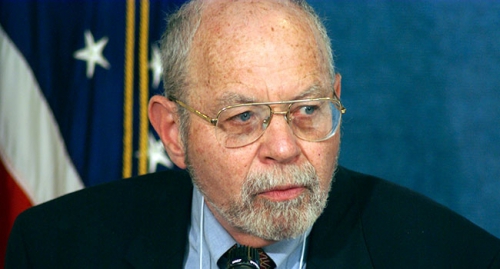
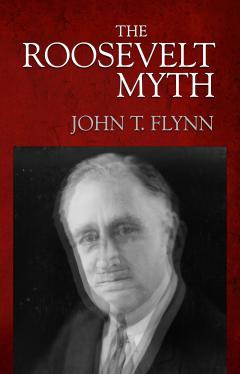 Flynn’s still highly readable
Flynn’s still highly readable 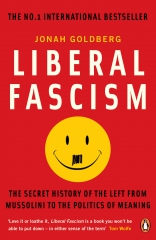 While New Deal critics tried to understand fascism in their time, today’s GOP propagandists do not try to understand anything about this interwar movement. They make their living by labeling the Democrats “fascists” and then identifying fascism and the Democrats with the Left. Jonah Goldberg’s best-selling
While New Deal critics tried to understand fascism in their time, today’s GOP propagandists do not try to understand anything about this interwar movement. They make their living by labeling the Democrats “fascists” and then identifying fascism and the Democrats with the Left. Jonah Goldberg’s best-selling 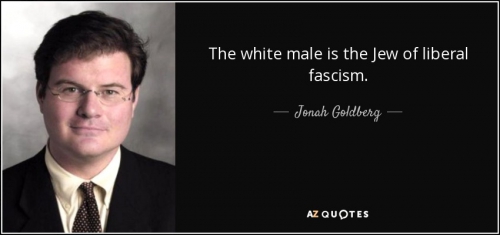

 Avant même d’aborder ces sanglants faits historiques occultés par une histoire officielle qui s’apparente de plus en plus à un ensemble de dogmes officiels incontestables sous peine d’excommunication civile et judiciaire, Christophe Dolbeau prouve que l’Oustacha, Ante Pavelic et l’État indépendant croate demeurent les victimes d’une virulente et intense désinformation. Éléments en pointe de la résistance croate à l’entreprise démente, centralisatrice et unificatrice de la dynastie usurpatrice serbe des Karageorgevic, les oustachis coopèrent avec les nationalistes macédoniens de l’ORIM (Organisation révolutionnaire intérieure macédonienne) et combattent les tchetnik royalistes panserbes de Draja Mihaïlovic qui bénéficient parfois de l’assistance matérielle des Italiens, toujours méfiants à l’égard d’une Croatie indépendante qui contrarient leurs ambitions balkaniques. Zagreb tente d’atténuer les litiges territoriaux et frontaliers avec Rome en s’érigeant en royaume offert à un membre de la Maison royale italienne de Savoie, le duc Aymon de Spolète, devenu Tomislav II. Mais le souverain abdique le 12 octobre 1943…
Avant même d’aborder ces sanglants faits historiques occultés par une histoire officielle qui s’apparente de plus en plus à un ensemble de dogmes officiels incontestables sous peine d’excommunication civile et judiciaire, Christophe Dolbeau prouve que l’Oustacha, Ante Pavelic et l’État indépendant croate demeurent les victimes d’une virulente et intense désinformation. Éléments en pointe de la résistance croate à l’entreprise démente, centralisatrice et unificatrice de la dynastie usurpatrice serbe des Karageorgevic, les oustachis coopèrent avec les nationalistes macédoniens de l’ORIM (Organisation révolutionnaire intérieure macédonienne) et combattent les tchetnik royalistes panserbes de Draja Mihaïlovic qui bénéficient parfois de l’assistance matérielle des Italiens, toujours méfiants à l’égard d’une Croatie indépendante qui contrarient leurs ambitions balkaniques. Zagreb tente d’atténuer les litiges territoriaux et frontaliers avec Rome en s’érigeant en royaume offert à un membre de la Maison royale italienne de Savoie, le duc Aymon de Spolète, devenu Tomislav II. Mais le souverain abdique le 12 octobre 1943…
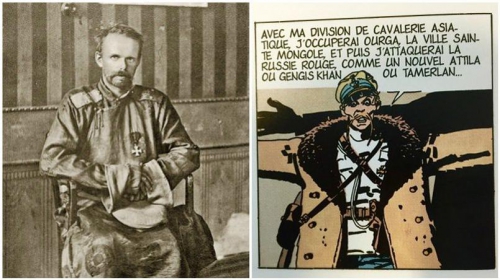



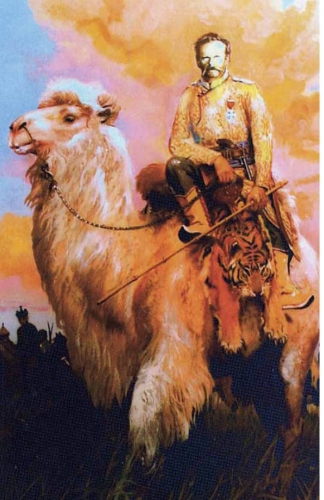

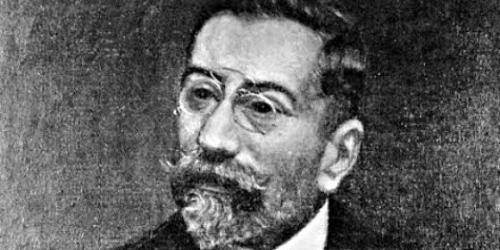
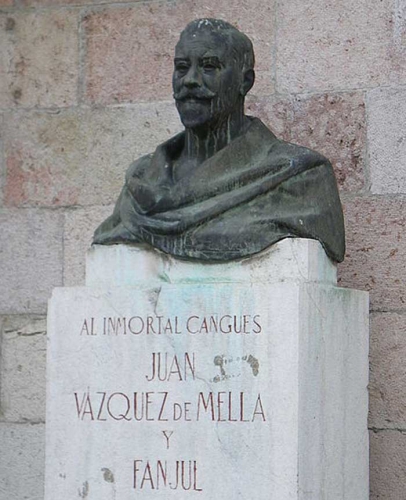
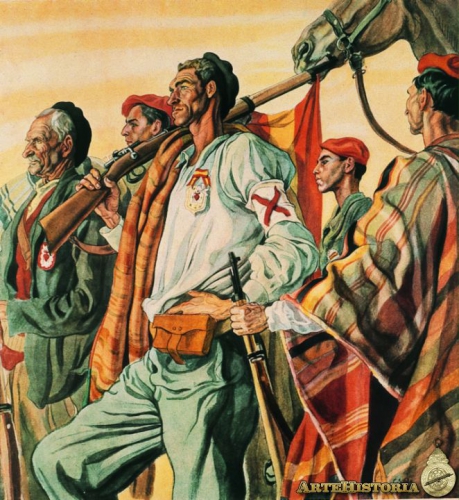
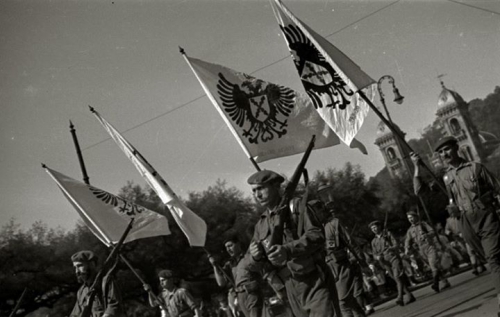
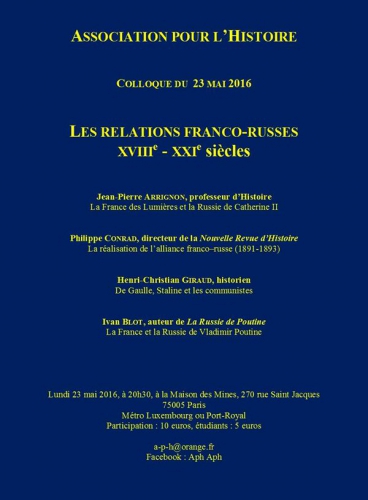
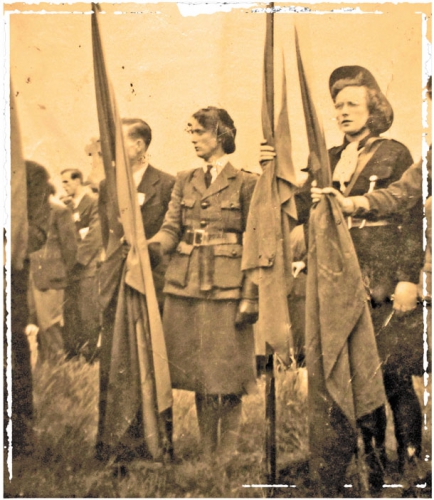
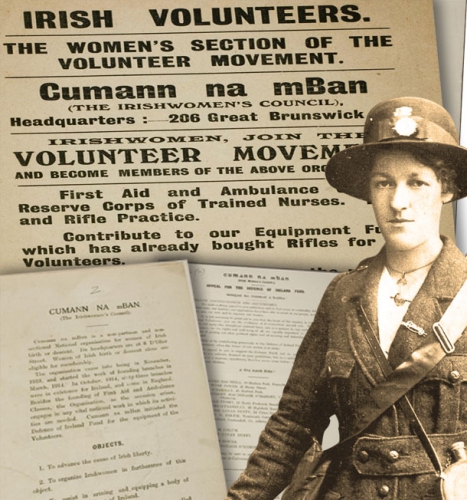
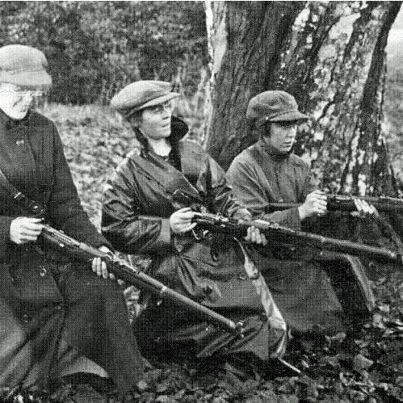
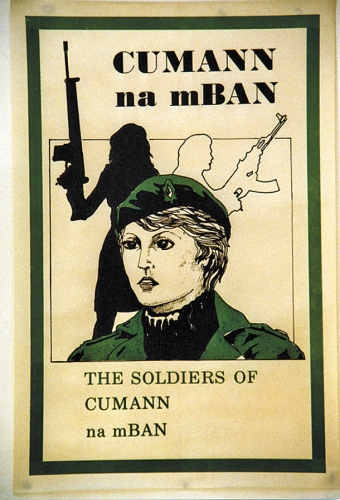 Ce même jour, les Dublinois eurent la surprise de voir 70 femmes armées de fusils pénétrer dans la cité dans un ordre impeccable. Elles savaient toutes ce qui les attendait. Pourtant, elles avançaient sans hésitation. C’était le Cumann na mBan.
Ce même jour, les Dublinois eurent la surprise de voir 70 femmes armées de fusils pénétrer dans la cité dans un ordre impeccable. Elles savaient toutes ce qui les attendait. Pourtant, elles avançaient sans hésitation. C’était le Cumann na mBan.